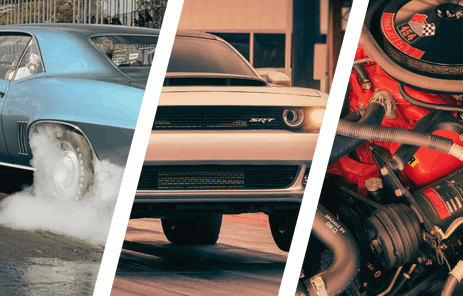
Why bother using a torque wrench to tighten down a bolt or nut? Isn’t is good enough to snug it down so that it’s good N’ tight? Guessing at how tight to torque a fastener is like playing Russian roulette with machinery. You might get away with it for a few times but sooner or later it will catch you. It happens to even the best mechanics too.
In July of 2009, Fernando Alonso driving the Renault entry in the Hungarian Grand Prix started the race on the pole. On lap 13, the right front wheel came off of Alonso’s car causing a lot of damage to the race car. Alonso had to withdraw from the race. Ironically, that incident happened a week after the fatal accident when Henry Surtees was hit by a stray wheel and a day after Filipe Massa suffered series head injuries from debris on the track. The cause of the wheel’s departure from the car was a wheel nut that had not been torqued.
Renault was initially suspended from the next race (which was later reduced to a 30,000 pound fine – the maximum amount that race stewards can levy) and the FIA released this statement, “The competitor knowingly released car number seven from the pit-stop position without one of the retaining devices for the wheel nuts being securely in position, this being an indication that the wheel itself may not have been properly secured. Being aware of this, they failed to take any action to prevent the car from leaving pit lane.”
Under-torque can result in unnecessary wear of nuts and bolts, as well as the parts they secure. Over-torque can cause failure of a bolt or nut from over stressing the threaded areas.
Using a torque wrench on fasteners helps prevent accidents, injuries and deaths. Having said that, it’s also important to make sure that you know the correct methods of applying torque to a fastener, and what the limitations are.

Torque Definitions
Breakaway torque. Breakaway torque is defined as minimum torque required to start the movement of a nut on or off bolt with no axial load on the nut and with the bolt completely through the nut.
Friction torque. Friction torque (tare, drag, run on) is the torque required to overcome the internal friction between a self-locking nut and bolt as the nut is being turned on the bolt, but before the nut contacts the washer (no axial load).
Final torque. Final torque is the sum of the friction torque plus the applicable torque values or friction torque plus torque from the manufacturer’s instruction manual.
Torque Limitations, Tips & Tricks

Adjustable or indicating torque wrenches should be accurate within 10 percent of the readings between 30 percent and 100 percent of full scale. Like any measuring instrument, it is best to avoid the extreme ends of the scale or range. A standard rule of thumb is to avoid using the bottom and top 10% of the torque wrench scale. For example, if you are using a torque wrench that goes from 30 to 150-in/lbs, the safe usable range of the torque wrench is 45 – 135-in/lbs.
Calibrate the torque wrench at least once a year, or immediately after it has been abused or dropped, to ensure continued accuracy.
Be sure that the torque applied is for the size of the bolt shank not the wrench size.
Always apply the torque to the nut and not the bolt. This will reduce rotation of the bolt in the hole and reduce wear.
Be sure the bolt and nut threads are clean and dry, unless otherwise specified by the manufacturer.
Run the nut down to near contact with the washer or bearing surface and check the friction drag torque with a dial type torque wrench for the torque required to turn the nut.
Add the friction drag torque to the desired torque. This is referred to as “final torque,” which should register on the indicator or setting for a click-type torque wrench.

Apply a smooth even pull when applying torque pressure. If chattering or a jerking motion occurs during final torque, back off the nut and retorque.
When installing a castle nut, start alignment with the cotter pin hole at the minimum recommended torque plus friction drag torque. Do not exceed the maximum torque plus the friction drag. If the hole and nut castellation do not align, change washer or nut and try again. Exceeding the maximum recommended torque is not recommended.
When torque is applied to bolt heads or cap screws, apply the recommended torque plus friction drag torque.
If special adapters are used which will change the effective length of the torque wrench, the final torque indication or wrench setting must be adjusted accordingly. Determine the torque wrench indication or setting with adapter installed as shown below.


With good care and timely calibrations, your torque wrench should last and be an invaluable tool in your work.
You might also like
PRI 2025: Drop Valvetrain Weight Using PBM Titanium Valves
PBM enters the valve market with their titanium valves that reduce reciprocating weight, ensuring precise valve control.


